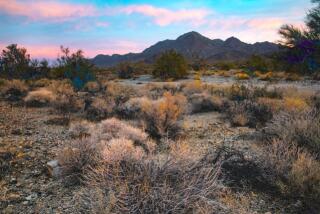New national park highlights Manhattan Project and the atomic bomb
- Share via
Want to take a long road trip halfway across the country to see where the atomic bomb was born? It doesn’t sound like the makings for a typical summer getaway, but the newly created Manhattan Project National Historic Park may change all that.
The park, designated as part of a bigger defense measure signed by President Obama this month, is to include three far-apart U.S. government lab sites in Hanford, Wash.; Los Alamos, N.M.; and Oak Ridge, Tenn.
To visit in one trip, you would wind up driving about 2,600 miles from south to north -- one way.
“Each of the Manhattan Project sites and structures add an important piece to the multifaceted story of thousands of people working across the country at incredible speed to develop and detonate an atomic bomb in secrecy,” says an online story by the National Trust for Historic Preservation.
The park is also to include the B Reactor at Hanford, the site of the world’s first large-scale nuclear reactor. The reactor was one of the sites that produced plutonium for the bombs dropped on Japan in 1945, an action that hastened the end of World War II.
The reactor, which also is a National Historic Landmark, currently is the subject of free tours that last about four hours. (Dates for 2015 haven’t yet been set.) Its website says more than 40,000 people have visited since 2009.
The concept for the national park has been on the drawing board for more than a decade and is projected to take about 12 more months to design.
Officials said the National Park Service and the Department of Energy, which still operates the government labs, will figure out which buildings and features best tell the story of the Manhattan Project and then will co-manage the park once it’s more well-defined.
One concern: How to provide access to visitors at high-security sites that are still in use.
More to Read
Sign up for The Wild
We’ll help you find the best places to hike, bike and run, as well as the perfect silent spots for meditation and yoga.
You may occasionally receive promotional content from the Los Angeles Times.







